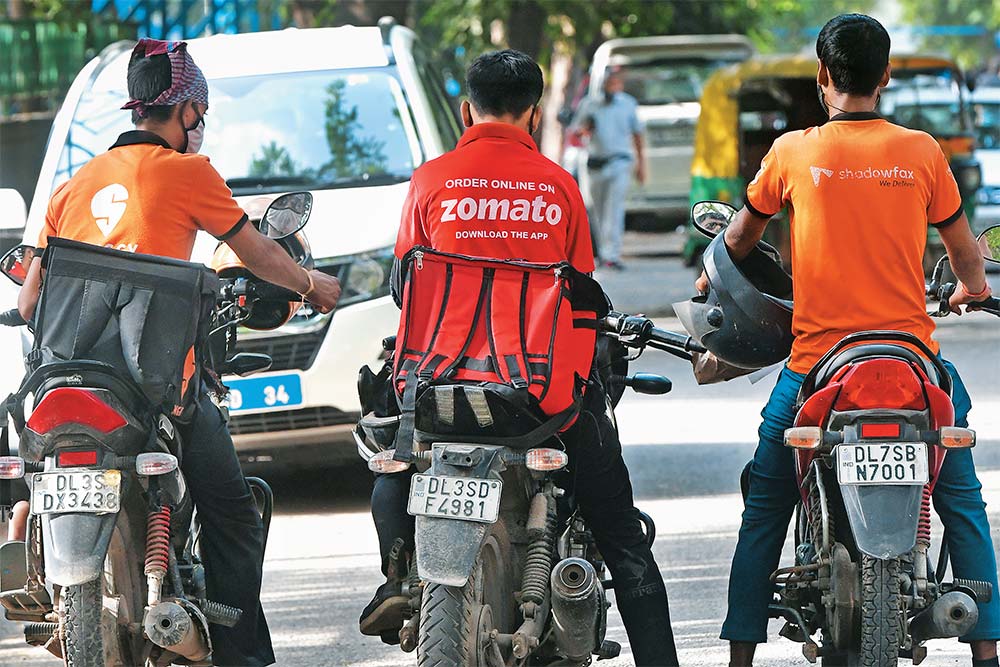Nandan Reddy and Sriharsha Majety were upbeat about the prospect for their first online venture when they launched Bundl, a logistics aggregator connecting small and medium companies to courier service providers, in 2013. A year on, they spotted brighter opportunities in food delivery space, a domain so far confined only to home delivery within a short distance.
Swiggy was born in August 2014. Rahul Jaimini joined Reddy and Sriharsha in their hyperlocal logistics venture exclusive for the restaurant industry. The quintessentially epicurean Indian grabbed the concept of tapping on the app for the choicest delectable delivered at the doorstep.
A journey that began in Bengaluru with six delivery executives and 25 restaurants on its platform, is now an army of 6,000 delivery executives spread across eight cities like Delhi-NCR, Mumbai, Bengaluru, Hyderabad, Chennai, Kolkata, and Pune. Swiggy is not just a household name today, but often an integral part of the everyday life.
In step with the growth in Swiggy, the Indian online food delivery market reached a value of $4.35 billion in 2020, according to IMARC. The market research company predicts an annual average growth rate of 30 per cent by 2026. Wider access to high-speed internet and deeper penetration of smartphones have paved the way for the sector to expand into small towns. An increasing population of working individuals and rising income levels have also fuelled the rally further.
The world food and beverage e-commerce users reached 1.5 billion in 2019 and are expected to add 800 million more, with an average of 25 per cent on-year growth, by 2024. Zomato, a market leader, has 80 million monthly active users and has set targets of reaching 20 million over the next few years.
The Covid-19 pandemic has seen brisk business in the sector with restrictions on mobility and complete ban on eating out. In sync with the social distancing norm, biggies like Swiggy, Zomato, McDonald’s and Domino’s Pizza introduced contactless delivery services since last year. Some companies have also introduced delivery through drones.
The global online food delivery services market is expected grow from $115.07 billion in 2020 to $126.91 billion in 2021 at a CAGR of 10.3 per cent. “The growth is mainly due to the companies resuming their operations and adapting to the new normal while recovering from the Covid-19 impact. The market is expected to reach $192.16 billion in 2025 at a CAGR of 11 per cent,” says a study by ReportLinker.
The lockdowns since last year have forced most people to stay indoors. A steep drop in footfalls, in turn, took toll on controlling operating expenses like rentals, electricity, and manpower costs. This was the beginning of the concept of cloud kitchen. These are virtual restaurants that prepare food only for delivery. The cloud kitchen market is expected to reach $71.4 billion by 2027 from $43.1 billion in 2019, an Allied Market Research said.
Online food delivery apps have created thousands of jobs and made life more convenient for people. But it has a direct bearing on our personal finance. Every day, 7.7 billion people around the world eat, consuming 14.5 million tonnes of food, says a Deloitte study. Millennials are opting to eat out or order food online more often compared to those in their late 30s and 40s, and those nearing retirement. Over 60 per cent of millennials order food or eat out at least once or more than once a month, it says.
Ready-to-eat food comes at a premium but it is the best option for the new-age consumers handling busy work schedules. The ease of ordering food has reduced the habit of cooking at home and pushed discretionary spends upwards. A higher sopending may weigh on our savings as well.
***
Global Online Food Delivery Market $126.91 Billion (2021)
Global Growth Rate 10.3%
Indian Online Food Delivery Market $4.35 Billion (2020)
Growth Rate in India 30% (2021-2026)
People Employed 10 lakh 2019-20 67,900 women (till June 2019)
Projected Revenue Rs 1,335 Billion in 2024
Projected User Base 300 million by 2024

